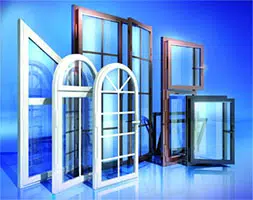 The notion of carpentry refers to the activity , work and workplace of a carpenter . Carpenters, for their part, are individuals who work with wood (the most solid sector of trees, which is covered by bark).
The notion of carpentry refers to the activity , work and workplace of a carpenter . Carpenters, for their part, are individuals who work with wood (the most solid sector of trees, which is covered by bark).
The purpose of carpentry is to modify the characteristics of wood to build useful objects. Wooden furniture, such as tables , chairs , and desks , is a product of carpentry.
When the carpenter focuses on working with fine woods, paying special attention to decoration and artistic issues, he is called a cabinetmaker . The cabinetmaker's trade is known as cabinetmaking .
The origins of carpentry are remote. With primitive tools, in ancient times man already worked wood to develop all types of objects. This means that in each country and, within them, in each region, we can find different ways of working with wood, as well as tools to carry out the creations.
The hammer , drill , gouge , lathe , sander , saw and saw are some of the tools that are currently used in carpentry. In addition, accessories such as nails , screws , glues and varnishes , among many others, are used.
Regarding the woods most used in carpentry, we can mention carob , mahogany , cedar , beech , pine and oak . Depending on the characteristics of the wood, carpentry is considered to have a higher or lower value.
It should be noted that, when this type of work is carried out with other materials , the concept of carpentry is usually used anyway: PVC carpentry , aluminum carpentry , metal carpentry , etc.
Among the products mentioned above, the two most important in the origins of carpentry were windows and doors. With respect to modern materials, such as plastics and metals, it is necessary to point out that many carpenters who initially worked with wood adapted to them so as not to be left out of the system.
When talking about metal carpentry , a term that was coined recently, reference is made to the activity of companies that manufacture and market products made of iron, steel, copper, aluminum, brass, glass, bronze and plastic, among others.
 Among the most common jobs within the field of metal carpentry are lamps, doors, bars, stairs, enclosures , lattices, blinds, windows, awnings, canopies and forging. Both offices and residential homes are increasingly adopting these products instead of those made of wood.
Among the most common jobs within the field of metal carpentry are lamps, doors, bars, stairs, enclosures , lattices, blinds, windows, awnings, canopies and forging. Both offices and residential homes are increasingly adopting these products instead of those made of wood.
The most frequent clients of metal carpentry are the agricultural sector, construction and decoration. In addition to those mentioned above, some of the work that carpenters carry out for themselves, as well as for many private clients, are industrial warehouses, metal structures, housing enclosures, register drawers, shutters with adjustable slats, mosquito nets and roller blinds.
A relatively modern concept related to carpentry is DIY , as it is defined as the manual activity carried out by an individual as an amateur, without hiring a professional , to create, improve, maintain or repair products and installations belonging to the areas of electricity, masonry, plumbing and, of course, carpentry.
DIY emerged in the 1950s in England and quickly spread throughout Europe. Nowadays, thanks to the possibilities that the Internet offers us, more and more people dare to unleash their creativity in an attempt to improve the appearance of their homes with the lowest possible budget.
